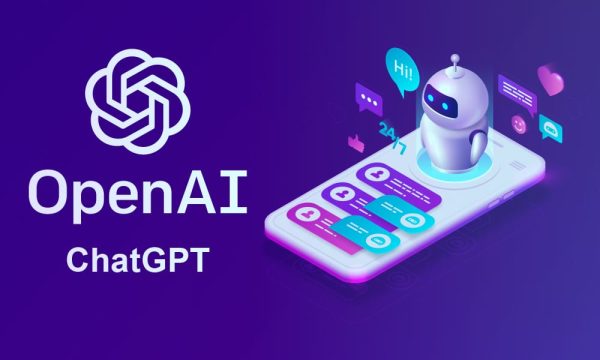Welcome back to the second part of our fascinating discussion with ChatGPT. In the initial segment of our conversation, we discussed the role of data collection, annotation and the importance of Human-in-the-loop in training Language Large Models. We will now talk about the challenges, bias faced while training AI models, their application and how advanced AI models affect humans in general.
- Rule-Based Systems: These involve creating specific rules that the machine follows to annotate data. For instance, a rule could be to label any text that looks like an email address (e.g., contains ‘@’ symbol) as an ‘Email’.
- Machine Learning Models: Pre-trained machine learning models can be used to annotate new data. For example, a pre-trained named entity recognition model could be used to identify and label entities in a text.
- Active Learning: In this method, a machine learning model is initially trained with a small batch of manually annotated data. Then, the model annotates the data that it’s most confident about, and these annotations are verified and corrected by human annotators. The model is retrained with this larger dataset and the process is repeated.
- Weak Supervision: Here, multiple weak annotators (which could be rule-based systems, crowd-sourcing, heuristics, etc.) are used to label data. Although each weak annotator is imperfect, their combined labels can provide a good approximation for training an initial model.
- Transfer Learning: This approach leverages a model that has been trained on one task and applies it to another related task. For example, a model trained to recognize objects in images could be used as a starting point for a model designed to recognize specific types of objects.
While automated annotation can be a powerful tool, it’s important to remember that it’s not always perfect, and the quality can vary based on the method used and the complexity of the task. There can be errors due to bias in the initial rules or training set, and complex tasks often still require human oversight. Thus, a combination of automated and manual annotation (semi-supervised learning) is often the best approach for large, complex datasets.
- Data Diversity and Representativeness: Ensuring that collected data encompasses diverse scenarios and accurately represents real-world conditions is challenging. For example, an image recognition model requires images with varied lighting, orientations, and backgrounds.
- Data Privacy and Ethics: Respecting privacy rights and adhering to ethical guidelines while collecting data is crucial. Anonymizing patient data in healthcare AI ensures privacy without compromising its utility for model training.
- Data Quality: High-quality data is essential; noisy, irrelevant, or incorrect data can negatively impact model performance. Social media data, with slang, typos, and inconsistent language use, poses challenges for sentiment analysis training.
- Annotation Quality and Consistency: Ensuring accurate and consistent annotations is complex. In image classification, different annotators labeling the same object differently can confuse the model during training.
- Time and Cost: Manual annotation is time-consuming and expensive, especially for large datasets. For natural language processing, annotators require substantial time and linguistic expertise to understand the text’s context.
- Scalability: Scaling the annotation process while maintaining quality is challenging. Language models often require billions of examples, necessitating coordination among a large team of annotators and ensuring consistency across annotations.
- Labeling Ambiguity: Correct labels can be subjective and open to interpretation. Annotators may have differing opinions on sentiment analysis tasks, leading to different label assignments for the same text.
- Sensitive Data: Handling sensitive data, such as medical or financial records, requires additional precautions. Annotators may need specialized training or certification to handle this data appropriately and ensure its protection.
Addressing these challenges often requires a combination of good project planning, clear guidelines for data collectors and annotators, use of automated tools where possible, and a robust system for quality control.
- Balance the Dataset: Adjust the dataset to have an equal representation of different classes.
- Use Bias Mitigation Algorithms: Employ techniques designed to reduce bias in the model’s predictions.
- Apply Differential Privacy: Add noise to data to protect sensitive attributes.
- Perform Bias-Aware Model Fine-tuning: Adjust the model considering bias mitigation.
- Employ Human Review and Guidelines: Reviewers follow guidelines that instruct not to favor any group during fine-tuning.
- Establish Continuous Feedback Loop: Regular interaction with reviewers allows continuous learning and bias correction.
Remember, completely eliminating bias is challenging, but these steps can help reduce it.
- Content Generation: They can help in generating content such as articles, reports, & emails.
- Customer Service: They can be used in chatbots and virtual assistants to automate customer support.
- Language Translation: They can help in translating text between different languages.
- Tutoring: They can provide explanations on various subjects, helping in education.
- Code Writing: They can assist in writing code, aiding software development.
- Marketing and Advertising: They can generate creative content for marketing campaigns.
- Accessibility: They can help in generating speech for text-to-speech applications.
- Job Automation: Routine and mundane tasks, especially in sectors like manufacturing, logistics, and clerical work, could be automated, leading to job displacement.
- Creation of New Jobs: On the positive side, the rise of AI would create new roles that didn’t exist before, such as AI specialists, data analysts, machine learning engineers, and roles in AI ethics and policy.
- Job Transformation: Many jobs will be transformed rather than eliminated, with AI taking over routine aspects of work, freeing employees to focus on more complex and creative tasks.
- Skill Demand Shift: There will be an increased demand for digital skills and understanding of AI, which could lead to a skills gap in the short term.
So, while AI will undoubtedly disrupt job markets, it also presents opportunities for new jobs and increased productivity.
- Lack of Understanding: AI models don’t understand context or concepts in the same way humans do. They identify patterns in data but don’t comprehend the underlying meaning.
- Data Dependency: They require large amounts of data for training. If the data is biased, incomplete, or of poor quality, the model’s performance can be significantly affected.
- Generalization: Models trained on specific tasks or datasets often struggle to generalize their learning to new, unseen scenarios.
- Explainability: It’s often hard to understand why certain models (especially deep learning models) have made specific decisions, leading to a lack of transparency or interpretability.
- Robustness: AI models can be sensitive to minor changes in input data (noise, distortion) and might not perform reliably in all conditions.
- Ethical Concerns: AI applications can lead to privacy issues, potential misuse, or unintentional bias, raising ethical and legal concerns.
As of my knowledge cutoff in September 2021, AI has made significant strides in contextual understanding, particularly with the development of sophisticated language models like GPT-3 and GPT-4. These models can generate human-like text based on the input they receive and their internal understanding of the relationships between words and concepts.
However, it’s important to note that this “understanding” is different from human understanding. AI systems, as they exist now, do not possess consciousness, self-awareness, or the same depth of experiential knowledge that humans have. They interpret context based on patterns in data, not on lived experience or intuitive grasping of nuance. Therefore, their understanding of context is fundamentally different from ours.
For example, while AI can generate a response to a question about a personal experience, such as “how did you feel on your first day of school?”, it’s doing so based on patterns in the data it was trained on, not on any personal experience or emotions it has. An AI doesn’t have feelings or personal experiences.
In terms of the future, it’s hard to say. Progress in AI research and development continues at a rapid pace, but the leap from pattern recognition to genuine human-like understanding and consciousness is a massive one, and we don’t yet know if it’s possible or how it would be achieved. Even if AI systems become more sophisticated in interpreting context, this won’t necessarily mean they have a human-like understanding of it.
- Improved natural language understanding and generation: More human-like conversational AI and better automated translations.
- AI fairness, explainability, and transparency: Techniques for understanding AI decision-making, ensuring fairness, and promoting transparency.
- AI in healthcare: Enhanced disease diagnosis, patient outcome prediction, and personalized treatment through AI.
- Reinforcement learning and general AI: More adaptable AI systems that can learn a variety of tasks and adapt to new situations.
- AI and quantum computing: Boosted computational power enabling more complex models and faster training times.
- Federated Learning: Privacy-preserving machine learning that trains models across multiple devices without sharing data.









